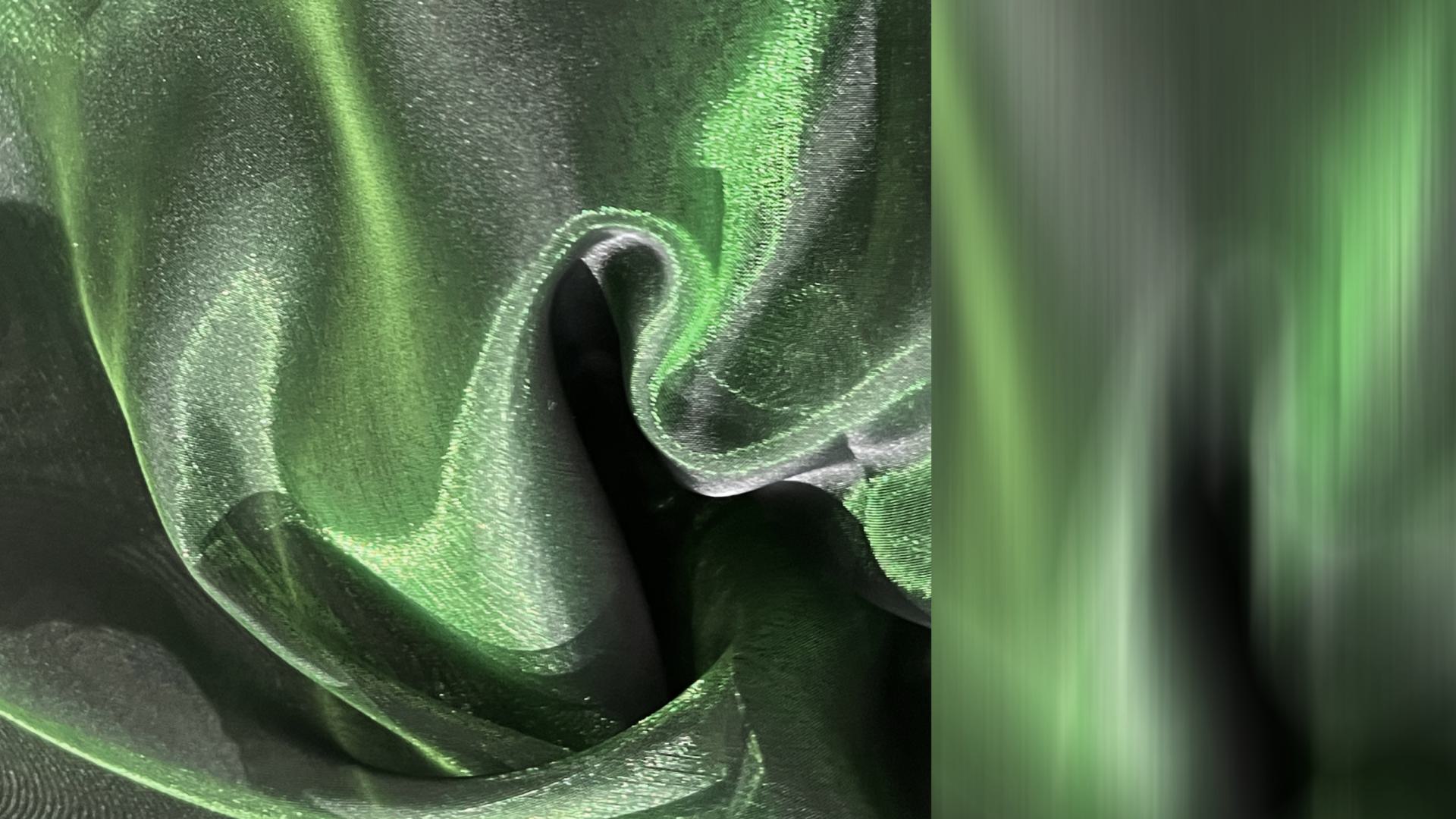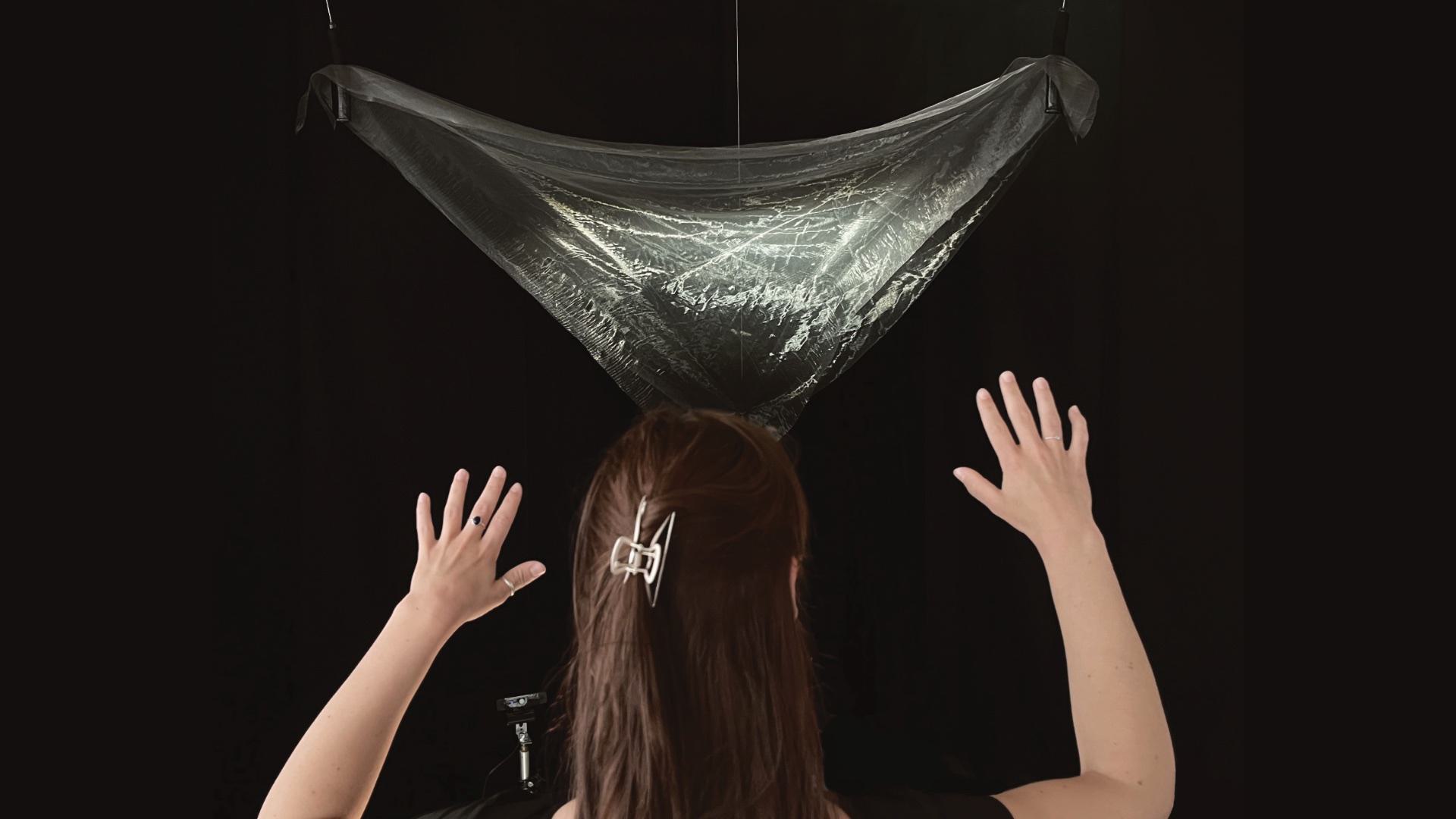Animating textile motion with the body
Making Motion explores shaping kinetic motion in large, flowing textiles. In Aerial Sketching, visitors lift their hands and bodies to animate light, floating textiles, transforming from passive spectators into active designers. Each gesture produces unique motion, revealing the subtle interplay between human movement, gravity, and soft material dynamics. The installation encourages experimentation with speed, direction, and rhythm, creating a performative, immersive dialogue between body and textile. By translating embodied gestures into live visual motion, the work challenges the norm of pre-determined kinetic patterns and reframes how audiences engage with textile animation in real time.
Recording and Preserving Kinetic Expression
Aerial Sketching records every interaction and translates it into Kinetic Captures: golden point clouds encoding the tracking data driving the motion. Inspired by light painting, these captures condense sequences of gestures into tangible representations, preserving subtle nuances and timing. Visitors can take them as keepsakes, extending the installation beyond the immediate performance. By freezing motion in time, the work creates a dialogue between the present and past: gestures made “now” can be replayed, echoed, and re-experienced, highlighting how embodied interaction, responsive textiles, and technology intertwine to produce dynamic, performative, and generative kinetic experiences that bridge doing and observing.
 Free wifi available
Free wifi available
 Toilets available
Toilets available
 Fully wheelchair accessible
Fully wheelchair accessible
 Wheelchair friendly toilet available
Wheelchair friendly toilet available

